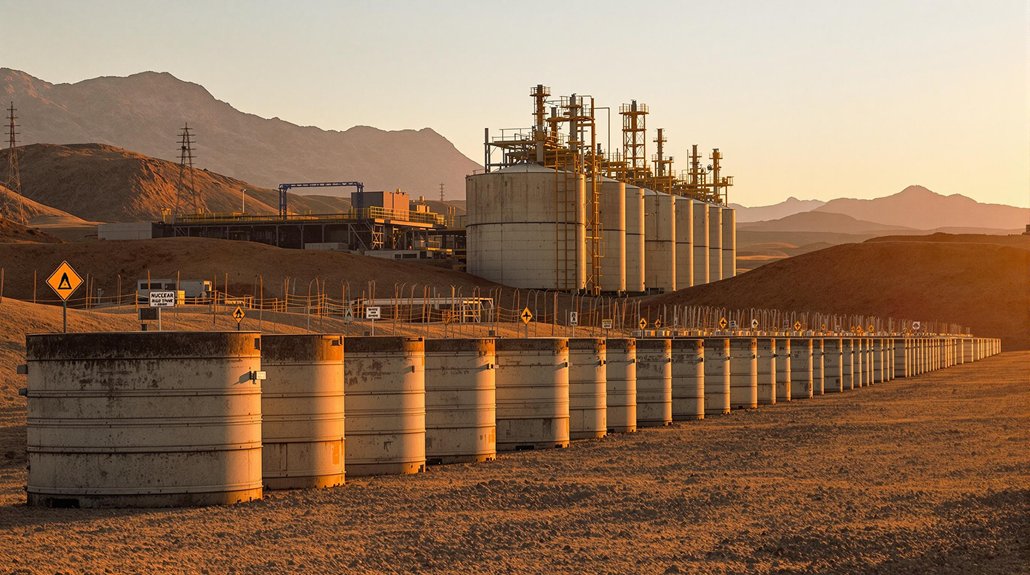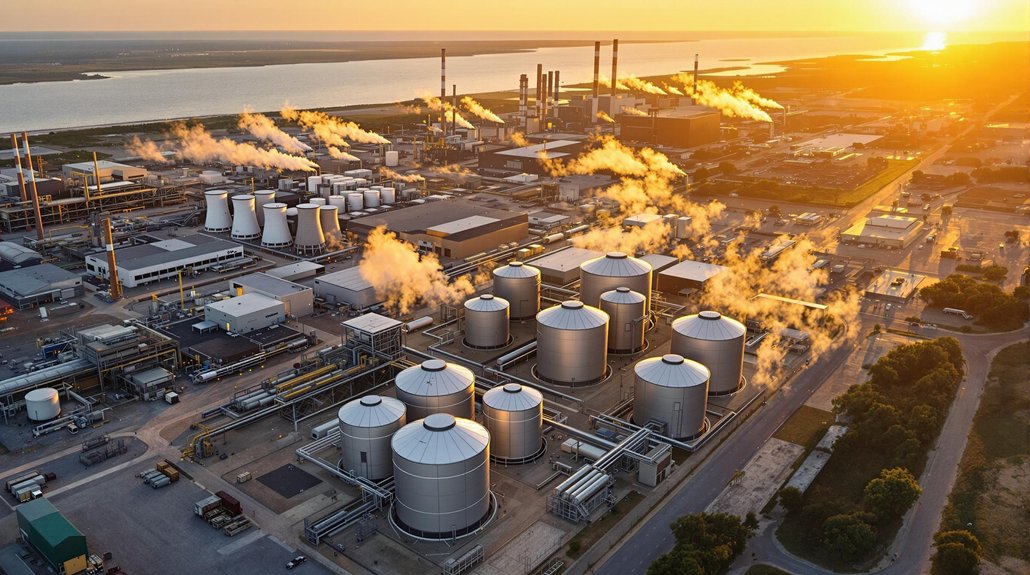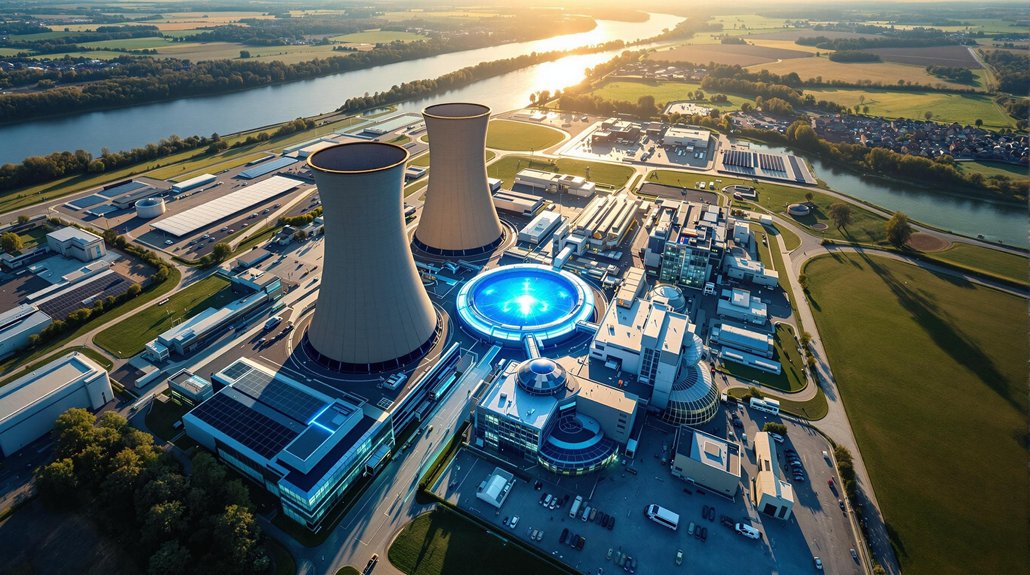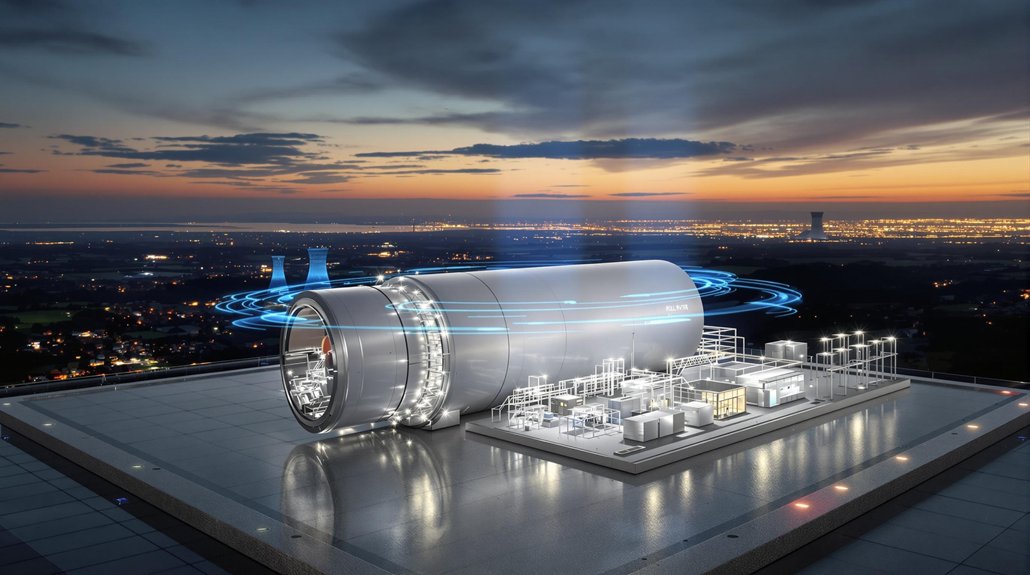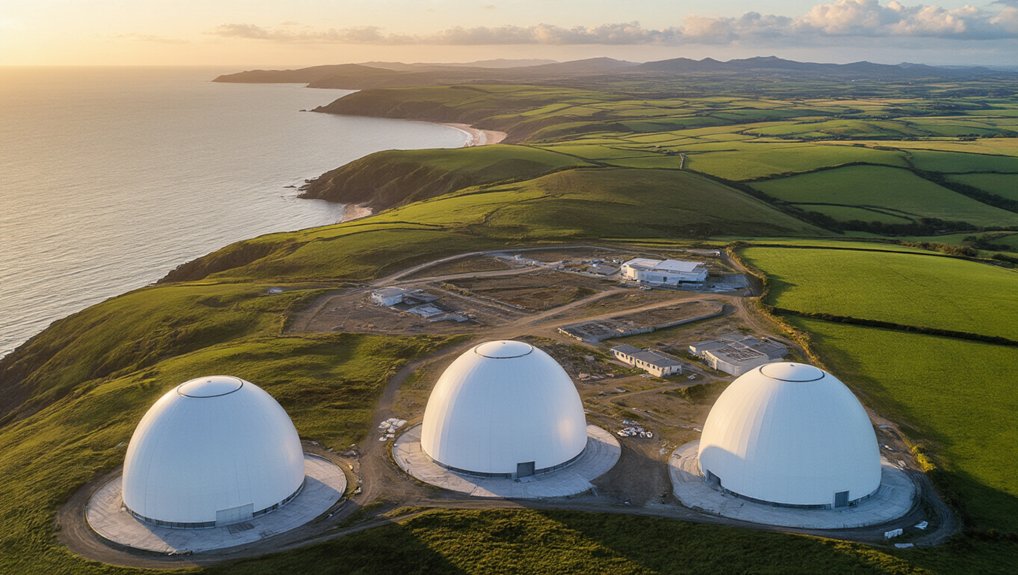Nuclear waste storage remains a messy, unresolved problem. Current methods—cooling pools and concrete casks—are just Band-Aids on a radioactive wound. Countries like Finland are digging deep underground repositories, while projects like America’s Yucca Mountain sit in political limbo. Nobody wants this stuff in their backyard, yet civilization keeps making more. The waste will outlive us by thousands of years. The clock’s ticking on finding a real solution.
The ticking time bomb of nuclear waste isn’t going away anytime soon. With stockpiles growing worldwide, scientists and governments are scrambling to figure out what to do with this radioactive mess we’ve created. The waste comes in various flavors—high-level stuff like spent fuel that’ll stay dangerous for thousands of years, all the way down to low-level waste like contaminated gloves and tools. No picnic either way.
Nuclear waste: humanity’s radioactive inheritance growing by the day, with no real solution in sight.
Right now, most spent fuel rods are cooling their heels in giant pools at reactor sites. Not exactly a permanent solution. Dry cask storage works better for the medium term, but these massive concrete-and-steel containers sitting above ground are hardly the end game. Most storage facilities use steel containers within concrete cylinders to prevent radiation leakage. Underground tanks hold liquid waste, often leaking into surrounding soil. Real smart, humans.
Everyone agrees we need permanent solutions. Deep geological repositories—basically high-tech tombs carved into stable rock formations—are the front-runners. Finland’s actually getting it done with their Onkalo facility opening in 2025. Sweden and France are following suit. Meanwhile, America’s Yucca Mountain project collects dust after billions spent. Politics. Go figure.
Some wild ideas have been floated over the years. Shooting waste into space? One rocket failure and hello, radioactive rain. Burying it under Antarctic ice? Great until climate change melts your storage facility. Dumping it in ocean trenches? The fish would like a word.
The technical challenges are enormous. How do you design containers that last longer than human civilization? How do you warn future generations not to dig in certain spots when languages evolve or disappear? Even with recycling technology that recovers about 96% for reuse, we still need solutions for the remaining highly toxic residual waste.
Public opposition remains fierce. Nobody wants nuclear waste in their backyard, but everyone wants the electricity. Classic.
The truth is uncomfortable: we’ve created materials that remain dangerous for millennia without fully solving the disposal problem first. Future generations might not appreciate our cavalier approach. But until fusion power or something better comes along, nuclear waste continues to accumulate while the clock keeps ticking.
